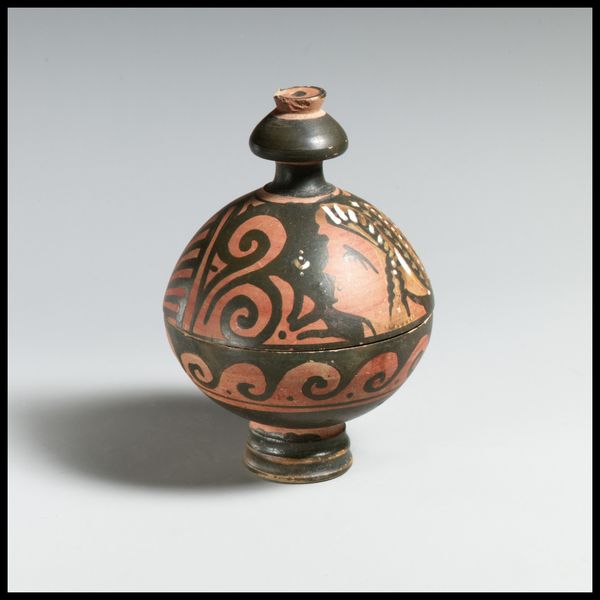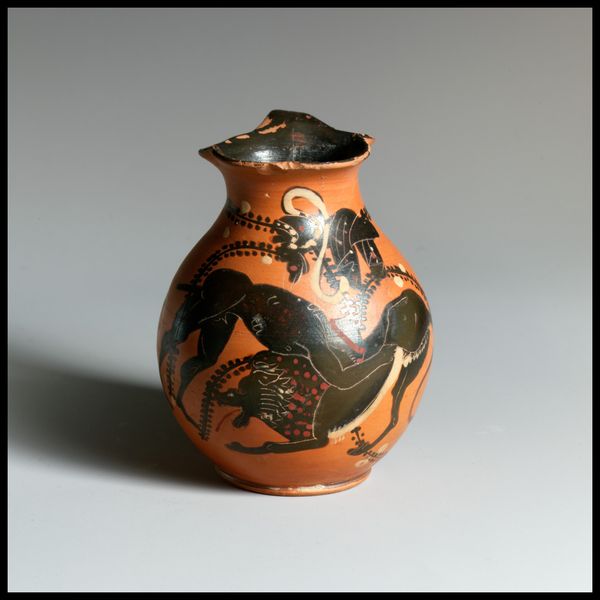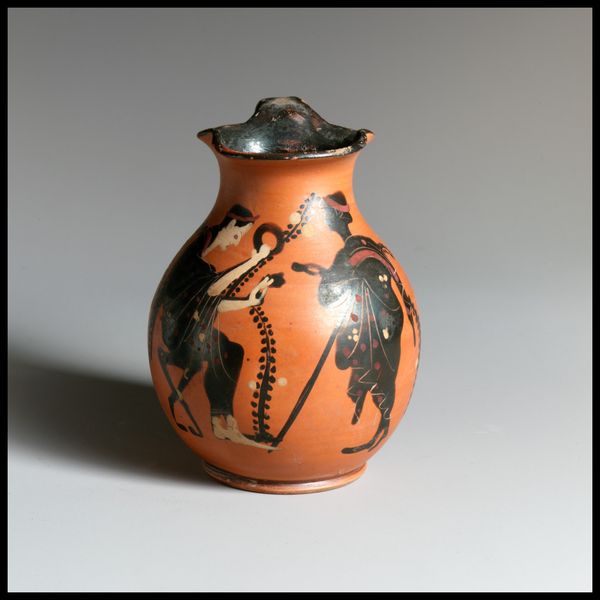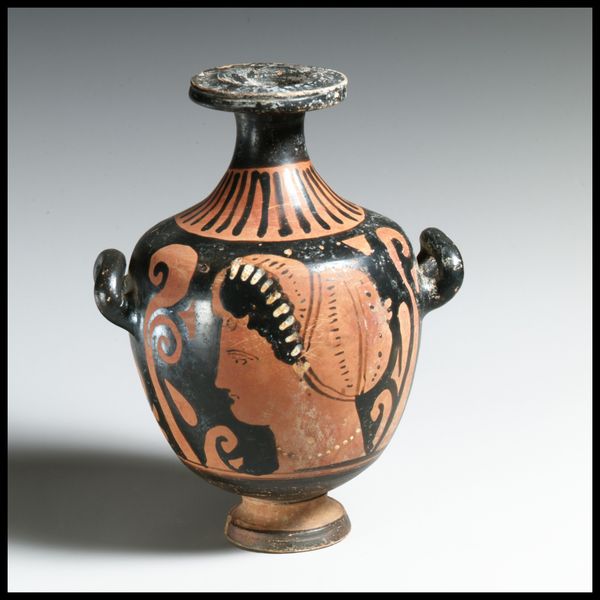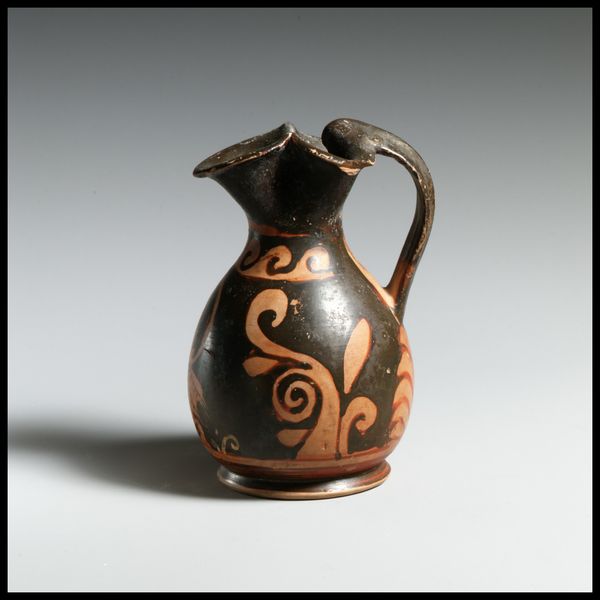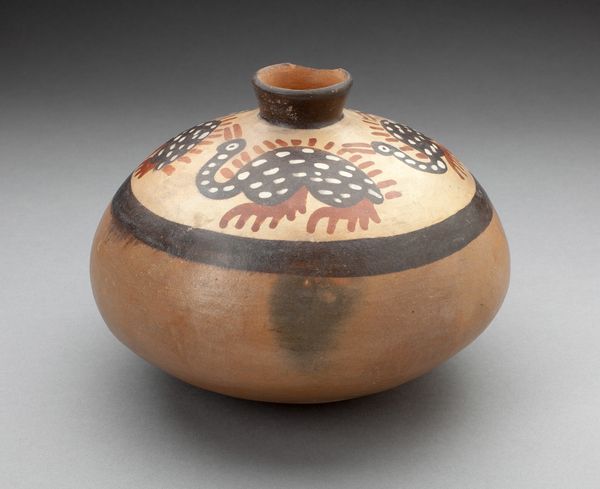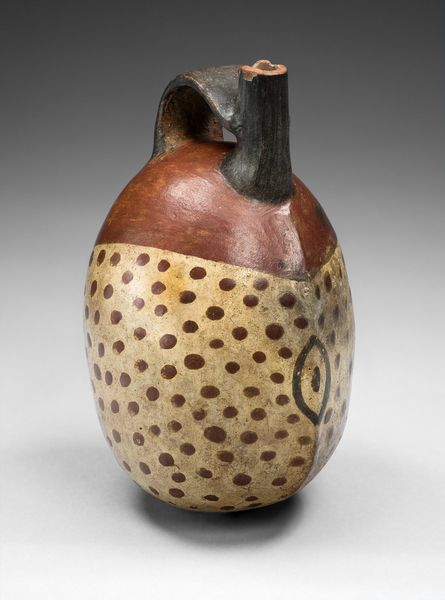
ceramic, earthenware, sculpture, terracotta
#
animal
#
close up photography
#
greek-and-roman-art
#
ceramic
#
vase
#
figuration
#
roman-art
#
earthenware
#
ancient-mediterranean
#
sculpture
#
macro photography
#
close-up photography
#
terracotta
Dimensions: H. 3 11/16 in. (9.4 cm) length 6 13/16 in. (17.3 cm)
Copyright: Public Domain
This terracotta vase in the form of a mouse was crafted by the Randazzo Group. Animal-shaped vases were a popular form of pottery in ancient Greece, specifically Magna Graecia (Greater Greece), the name given by the Romans to the Greek settlements in Southern Italy. The shape suggests its potential to be used in domestic spaces, perhaps used at the table. But, as an artifact, this vase also testifies to the complex dynamics of cultural exchange and artistic production in the ancient Mediterranean world. The black-figure decoration is indeed typical of Greek pottery and features geometric patterns and stylized motifs. But the mouse is far from the heroic subjects usually depicted in Greek pottery. Did the artist chose to represent the animal because of its symbolic meaning in ancient Greek culture? Or did the artist chose to depict an ordinary animal, in order to be more accessible? Or even, was this a form of rebellion against more traditional artistic subjects? Historians analyze the archeological record to interpret the purpose and significance of artworks like this. Each artifact carries within it a wealth of information about social life, cultural values, and artistic practices of its time.
Comments
No comments
Be the first to comment and join the conversation on the ultimate creative platform.
